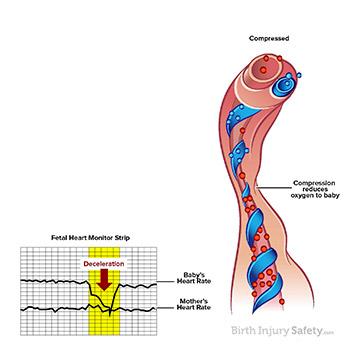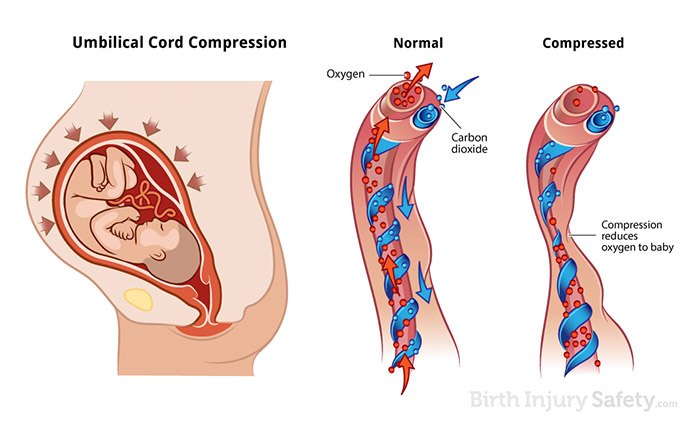Many parents want to know if injury or death from umbilical cord compression can be prevented. The answer is YES. Because of the risk of these serious injuries or death, medical professionals should closely monitor a baby throughout the pregnancy, labor, and delivery. When the umbilical cord is compressed and the flow of oxygen to the baby is reduced or stopped, the baby’s heart rate responds to the lack of oxygen, and there will likely be signs that the baby isn’t getting enough oxygen on the fetal heart monitor tracing. The baby’s heart “decelerates” or slows down. This is a sign to the medical providers that the baby is potentially in danger. Doctors and nurses must monitor the baby’s heart rate and be prepared to act quickly if this happens. Umbilical cord compression may also be detected by an ultrasound or fetal Doppler test.
If a doctor or nurse detects signs that compression is occurring, these medical professionals have a duty to take immediate action. When cord compression occurs during birth, the medical professionals must determine whether to perform an emergency cesarean section (C-section) to protect the baby. Failure to perform a C-section (cesarean section) in a timely manner may constitute medical negligence.
What is Umbilical Cord Compression?
Before a baby is born and takes the first breath of air into his or her lungs, the baby receives oxygen, blood, and nutrients through the umbilical cord. The umbilical cord is the lifeline between the mother and the baby. However, during pregnancy and childbirth, this vital lifeline can become compressed, cutting off the baby’s supply of blood and oxygen, and putting the baby in danger of brain injury or death from lack of oxygen. Umbilical cord compression in the womb occurs when the umbilical cord is pressed between two surfaces, such as the baby’s head and either the wall of the uterus or the mother’s pelvic bone. Compression can also occur if the umbilical cord becomes knotted or wrapped around the baby’s neck. The risk for umbilical cord compression is increased if a woman is carrying two or more babies.
Umbilical cord compression can also occur during delivery. This can happen when the cord prolapses (drops through the open cervix into the vagina before the baby does) and becomes compressed between the baby and the birth canal. Umbilical cord compression is more likely in an instance of breech birth (feet first) or if the mother is giving vaginal birth to two or more babies.
Prolonged compression of the umbilical cord cuts off blood and oxygen to a baby, resulting in lifelong injuries, brain injury, and even death. Birth Injuries that can result from prolonged umbilical cord compression include brain damage, cerebral palsy, behavioral disorders, and autism.

If your child has suffered a birth injury resulting from a compressed or prolapsed umbilical cord, the injury may have been preventable and there may be grounds for a medical malpractice claim. Unfortunately, birth injuries can lead to a lifetime of medical care and expenses. If your child’s injury was the result of negligent medical care, your child may be legally entitled to compensation under the law. For more information about umbilical cord compression and your child’s legal rights, please call (866) 393-2611. The team at Brown Trial Firm is happy to answer your questions and offer legal insight where we can.



